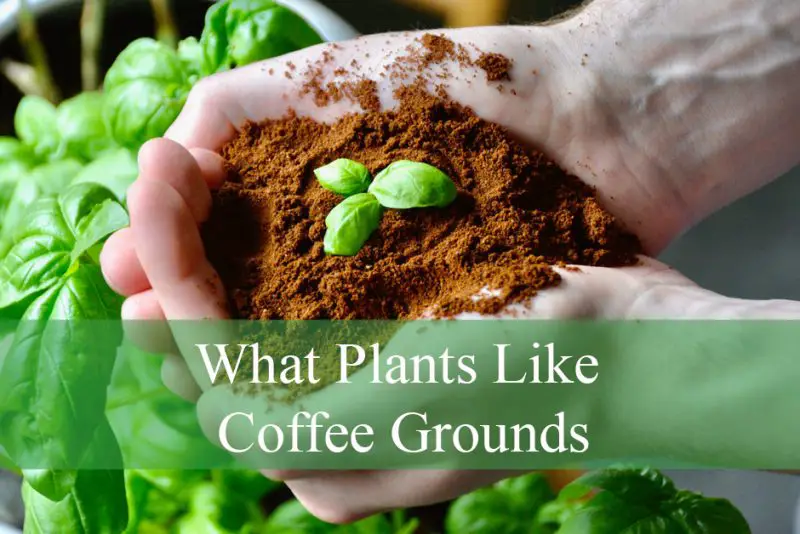Coffee grounds are more than just a kitchen waste product; they are a rich source of nutrients that can significantly benefit certain plants. Packed with nitrogen, potassium, and other trace minerals, used coffee grounds can enrich soil structure, encourage healthy root development, and even act as a natural pest deterrent. But not every plant enjoys this organic addition. Knowing which plants thrive on coffee grounds will help you boost growth and create a healthier garden ecosystem.
Below, we explore in detail which plants truly benefit from coffee grounds and why they respond so positively to this natural fertilizer. You will also learn how to use coffee grounds effectively to ensure the best results.
Why Coffee Grounds Are Good for Some Plants

Coffee grounds are considered an excellent organic amendment because they contain nitrogen, which is crucial for leafy growth. They also have small amounts of phosphorus, potassium, and other micronutrients essential for plant development. Additionally, used coffee grounds help improve soil aeration and water retention when mixed properly.
Another important aspect is their slight acidity, which makes them perfect for acid-loving plants. However, this acidity level decreases once the coffee grounds are thoroughly rinsed or composted, making them suitable for a wider range of plants. Moreover, coffee grounds encourage earthworms and beneficial microorganisms, enhancing soil fertility over time.
How to Use Coffee Grounds for Plants
Before exploring which plants love coffee grounds, it’s crucial to understand how to apply them correctly. Fresh coffee grounds are more acidic, so they should be used sparingly or mixed into compost before application. Used coffee grounds, on the other hand, are milder and safer for direct use.
Mixing coffee grounds into the soil rather than simply sprinkling them on top is recommended to prevent mold growth and compaction. A thin layer combined with other organic matter, such as leaves or compost, works best. Watering after application helps the nutrients seep into the soil, ensuring plants receive the benefits more effectively.
Acid-Loving Plants and Coffee Grounds
Blueberries and Their Love for Coffee Grounds
Blueberries thrive in acidic soil, making them perfect candidates for coffee ground application. The nitrogen in coffee grounds promotes vigorous leaf growth, while the organic matter improves soil structure, keeping it loose and well-drained—exactly what blueberries need. Regular additions of coffee grounds during the growing season can enhance fruit production and keep the plant healthy year-round.
Azaleas and Rhododendrons Benefit Greatly
Azaleas and rhododendrons are well-known for their preference for acidic, nutrient-rich soil. Coffee grounds mimic the natural forest floor conditions these plants love. When added around the base, coffee grounds slowly release nitrogen and organic matter, promoting lush foliage and vibrant blooms. Mulching with coffee grounds also helps retain soil moisture, which is essential for these shallow-rooted shrubs.
Hydrangeas Respond with Color Changes
Hydrangeas are famous for changing flower color based on soil pH. Adding coffee grounds slightly lowers the soil pH, making it more acidic, which encourages blue-toned blooms in many hydrangea varieties. The additional nutrients also stimulate healthy growth, stronger stems, and fuller flowers, making coffee grounds a natural choice for gardeners wanting richer colors.
Vegetable Plants That Enjoy Coffee Grounds
Tomatoes Benefit but Require Caution
Tomatoes can benefit from the nitrogen boost coffee grounds provide, especially during their early leafy growth stages. However, moderation is key because too much nitrogen can lead to excessive leaf growth at the expense of fruit production. Mixing coffee grounds into compost or applying a thin layer around the base ensures a steady release of nutrients without overwhelming the plant.
Carrots Grow Better in Coffee-Enriched Soil
Carrots prefer loose, well-draining soil, and coffee grounds help achieve this by improving soil texture. The organic matter keeps the soil crumbly, allowing carrots to grow straight and long. Additionally, the mild acidity of coffee grounds creates a slightly more favorable environment for carrot growth, especially in alkaline soils.
Radishes Respond to Nutrient Boosts
Radishes grow quickly, and a nitrogen-rich boost from coffee grounds can enhance their leaf development, which is essential for photosynthesis and root growth. The improved soil aeration from coffee grounds also helps radishes form more uniform and crisp bulbs, giving gardeners better harvests.
Flowering Plants That Thrive with Coffee Grounds
Roses Enjoy the Nutrient-Rich Boost
Roses respond beautifully to coffee grounds because they require nitrogen for vigorous leaf and stem growth. The organic matter also improves soil aeration and water retention, two critical factors for healthy roses. Many gardeners notice deeper green leaves and more abundant blooms after regularly incorporating coffee grounds into the soil around rose bushes.
Camellias Flourish with Coffee Additions
Camellias are acid-loving plants that naturally thrive in slightly acidic, humus-rich soil. Coffee grounds replicate this environment by providing essential nutrients while keeping the soil slightly acidic. This encourages healthier leaves and longer-lasting flowers, especially when coffee grounds are applied during the active growing season.
Gardenias Benefit from the Acidity
Gardenias, known for their fragrant white blooms, prefer acidic soil conditions. Coffee grounds lower the soil pH just enough to enhance nutrient absorption for these plants. With regular additions, gardenias produce lusher foliage and more vibrant, fragrant flowers, making coffee grounds a natural companion for these ornamental shrubs.
Indoor Plants and Coffee Grounds
Snake Plants Appreciate the Extra Nutrients
Snake plants, although not acid-loving, benefit from the slow nutrient release of coffee grounds when used sparingly. A thin layer of well-composted coffee grounds mixed into potting soil provides a steady supply of nitrogen, encouraging strong, upright leaves. It’s essential, however, to avoid overwatering after adding coffee grounds, as snake plants dislike overly damp conditions.
African Violets Respond Well to Coffee Grounds
African violets prefer slightly acidic soil and enjoy the organic matter coffee grounds provide. When mixed into their potting soil in small amounts, coffee grounds encourage vibrant leaf growth and consistent flowering. The added nutrients mimic the natural, humus-rich environment these indoor beauties thrive in, making coffee grounds an excellent choice for violet enthusiasts.
Mistakes to Avoid When Using Coffee Grounds
While coffee grounds are beneficial, using them incorrectly can harm plants. Applying thick layers directly to the soil surface can create a barrier, preventing water and air from reaching the roots. Fresh coffee grounds, being more acidic, should be avoided for plants sensitive to pH changes. Additionally, overuse can lead to excessive nitrogen, causing lush foliage but fewer flowers or fruits.
For best results, always mix coffee grounds into compost or combine them with other organic matter. Using them in moderation ensures that plants receive a balanced nutrient supply without the risk of root damage or fungal growth.
FAQs About Using Coffee Grounds for Plants
Can I Put Coffee Grounds Directly on Plants?
Yes, you can put used coffee grounds directly on plants, but it should be done in moderation. A thin layer mixed into the soil works best because applying a thick layer on top can block air and water circulation. It is also recommended to water the soil after adding coffee grounds to help nutrients absorb properly.
Are Coffee Grounds Good for All Plants?
No, not all plants benefit from coffee grounds. Acid-loving plants like blueberries, hydrangeas, and azaleas respond well, but plants that prefer alkaline or neutral soil may not thrive. Additionally, overusing coffee grounds can lead to nitrogen buildup, which may damage sensitive plants.
How Often Should I Add Coffee Grounds to My Plants?
Adding coffee grounds once every two to four weeks is usually enough. Frequent application can lead to excessive soil acidity or compaction, which may harm plant roots. For best results, mix coffee grounds with compost or other organic materials before applying.
Do Coffee Grounds Attract Pests to Plants?
Coffee grounds generally do not attract pests; in fact, they can help repel some insects like ants and snails. However, leaving wet coffee grounds on the soil surface for too long may encourage mold or fungus growth, so it’s better to mix them into the soil.
Should Coffee Grounds Be Composted Before Use?
Composting coffee grounds before use is ideal because it balances their nitrogen content and reduces acidity. When mixed with other organic waste, composted coffee grounds create nutrient-rich humus that improves soil structure and supports plant health.
Final Thoughts on Using Coffee Grounds
Coffee grounds are an excellent, eco-friendly way to enrich your garden soil when used correctly. Acid-loving plants like blueberries, azaleas, and hydrangeas thrive with their slight acidity, while vegetables such as carrots and radishes benefit from the improved soil texture. Even flowering plants like roses and gardenias respond positively, producing more vibrant blooms. Indoor plants, including African violets, can also enjoy the gentle nutrient boost coffee grounds provide when applied carefully.
By understanding which plants benefit the most and applying coffee grounds properly, you can turn your daily coffee habit into a sustainable gardening practice. With patience and the right technique, your plants will reward you with healthier growth, vibrant colors, and bountiful harvests.






